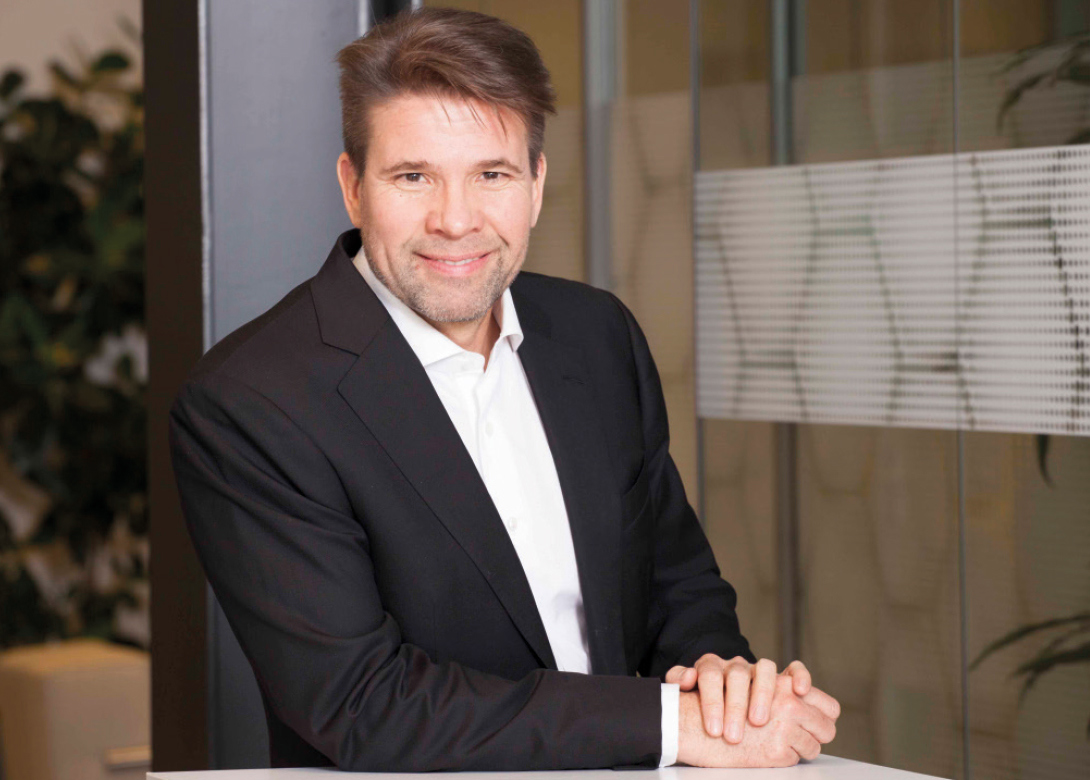
Perhaps the best word to describe the automotive market in 2017 is ‘steady’. Volumes in Europe were stable, while countries such as Russia and Brazil are starting to recover from downturns but are still some way from their respective highs. China remains the largest geographical market.
However, it is becoming increasingly fragmented with vehicle production growing in some areas and shrinking in others. Elsewhere, Mexico is picking up and India continues to grow particularly in low-cost cars where it is predicted to be bigger than Germany by the end of 2018.
Like the rest of the fasteners industry, we were confronted with increased material prices. And, of course, customers weren’t eager for us to pass the higher costs on. Instead, we focused on cost efficiency and innovation, which allowed us to increase our annual revenue through more business with tier 1 suppliers to the industry and by selling more complex products.
Electrifying the market
Technologically, the automotive industry is undergoing dramatic changes. The most obvious is the move away from fossil fuels. 2017 saw some confusion on what would replace them as a power source. Long-term the answer is almost certainly battery powered electric vehicles (EVs). But while consumers accept EVs for short-range urban driving, there are still concerns over battery capacities and charging for longer distances.
The choice of powertrain has a big impact for the fasteners market. EVs typically use more fasteners than a comparable ICE (Internal Combustion Engine) vehicle. For example, a certain luxury brand SUV uses around 2,500 fasteners in its ICE version and 5,500 in its hybrid electric version. The types and usage of those fasteners is also different. ICE cars require a mix of standardised and complex fasteners in standard materials. In contrast, EVs use mainly standardised fasteners in a much greater variety of sizes and materials. However, the confusion around the powertrain meant the e-mobility market showed only a very slight increase last year.
Connected cars
Vehicles are also becoming increasingly connected. Currently, connectivity is used in driver assistance systems such as collision prevention and lane control. Possibly as early as 2018, we can expect to see automated driving – where the driver can switch on an auto-pilot system – with full autonomous driving likely to emerge after 2020. This will be a real game changer, completely disrupting the way people buy and build cars.
Analysts estimate that half of today’s car owners will no longer want to own a car by 2025. Instead, there will a much greater emphasis on shared vehicles. Those vehicles that are privately owned are likely to become more of a third living space than a means of transport, so buying decisions will be based more on the digital ecosystems they offer.
The big consequence for our industry will be a proliferation of new players in the market – an effect that we are already starting to see. The familiar car OEMs like VW, GM and Toyota are being joined by companies whose heritage lies more in the digital world such as Tesla, Waymo (a Google company) and Dyson. Diversification will be even more pronounced beyond OEMs as we see not just new players in established market sectors but also completely new sectors built around new in-car services. This all means big opportunities for the fastener industry if we support the needs of these new players.
Increasing complexity
To do that, fasteners need to add value beyond their primary function either through cost or fuel efficiency. That means smaller products in lighter materials, and more advanced products that integrate multiple parts and deliver specific functionality. We at Nedschroef are already starting down this path, and as part of this strategy we acquired CP Tech GmbH in June 2017. This move extended our high-end engineering know-how and allows us to offer a complete package to support the new, high-tech oriented OEMs that are moving into the mobility market.
Looking forward to 2018
I am confident about the market’s performance in 2018. As a European company, BREXIT is naturally going to be a big theme and like all industries we are waiting to see exactly what impact it will have. However, regulations on greenhouse gas emissions will likely drive growth in electric and hybrid vehicles and lead to more new players in the mobility market. Environmental concerns are also likely to drive demand for new, environmentally friendly coatings.
Furthermore, I expect to see the start of the ‘connectivity effect’ on the market, leading to new and disruptive business models. The effect in 2018 will probably be relatively small, but over the coming years it will transform the automotive fastenings market.


Will joined Fastener + Fixing Magazine in 2007 and over the last 15 years has experienced every facet of the fastener sector - interviewing key figures within the industry and visiting leading companies and exhibitions around the globe.
Will manages the content strategy across all platforms and is the guardian for the high editorial standards that the Magazine is renowned.
Don't have an account? Sign Up
Signing up to Fastener + Fixing Magazine enables you to manage your account details.